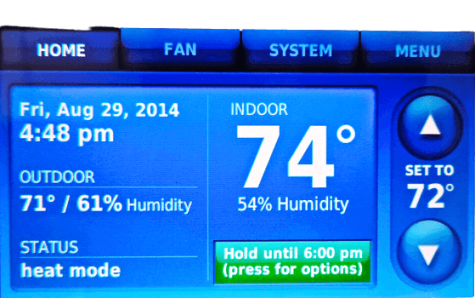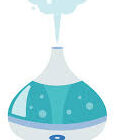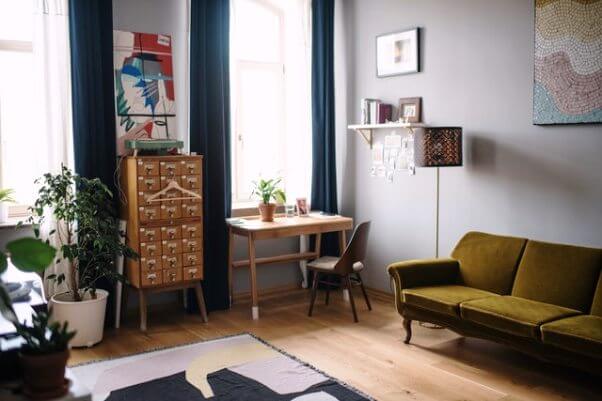How Can I Dehumidify My Room Naturally without Using a Dehumidifier?
Do you want to know how to remove humidity from a room without a dehumidifier?
It is possible to dehumidify a room without using the best dehumidifier.
It will not be as easy as cranking up a dehumidifier and leaving it to do all the work, you know sucking in the moist air and blowing out dry air.
It will require some work, but it is definitely worth the effort. Besides, you will also save some money on your electricity bill.
Tips to remove humidity from a room without a dehumidifier

Removing humidity from your home without using a humidifier is easy. Without wasting time, let’s go straight into the different methods you can use to lower the moisture content in your air:
1. Using plants to remove humidity
Using plants indoors is like a double-edged sword for you, that is, it has double benefits. First, they are quite effective at removing humidity.
The same way that some plants are effective at increasing humidity, some are quite good at lowering the moisture level in your air.
Secondly, in many home improvement magazines and blogs, indoor plants are the trend for the 21st century.
It seems indoor plants have made a comeback into the indoors. Therefore, when you use carefully selected plants, they will improve your interior décor a great deal.
You can have fresh air with balanced humidity, and at the same time, improve your interior décor a great deal.
If you use plants such as Peace Lily, English Ivy, Reed Palm and others, they will be effective. The reason is that they absorb moisture through the leaves. You can keep watering them and they will still absorb moisture from the air.
Other plants that you can use to lower the level of moisture from your home include Spider Plant, Boston Fern, Epiphytes and Xerophytes.
2. Using natural humidifier baking soda
This is an effective method, but there is a limitation. It is best for smallest spaces such as closets, bathrooms and others.
Because of its availability, you will find it mentioned in many resources for how to dehumidify a room.
The main benefit with baking soda is that it not only absorbs moisture, but it also absorbs odors as well. The downside is that you can only use so much of it.
Below: PURE Sodium Bicarbonate baking soda
The method of use is very simple. First, you just need to add some baking powder to an open container. You can then place it in the space that you want to dehumidify and leave it.
Keep checking every 30 minutes or so, and stir it with a stick. This ensures that the baking soda does not clump up too fast as it absorbs water. Eventually it will, but you don’t want it to happen too fast.
The main benefit of using this method is that baking soda is so readily available in every kitchen. Not only can you use it to make baked treats, but you can also use it to lower humidity.
3. Use a fan and dry heat source
Dry heat comes from wood stoves and electric heater. Sorry gas heaters, but in this case, they cannot be used to produce dry heat. Dry heat will help the dampness from the high humidity dip low.
Below: Vornado MVH Vortex Dry Heater
It is recommended that you use a fan to whip the air around when you are using the heater. That way, it is going to dry the air faster.
When the excess humidity is not too much, you can use a fan alone to drive the moisture level down.
You can also use this method for how to dehumidify a cold room. That way, you get the room warmed up and at the same time, you drive the humidity level down.
Be careful to turn the heat off before the temperature in the room can get to 94°F/ because then, it would turn the air moisture into steam, which would in return damage your walls, furniture, clothes and paintings.
4. Use Calcium Chloride
Well, you might not get calcium chloride as a standalone product in the market, but you can get it as a component of other products. Just look for desiccants on Amazon.com or other online marketplaces.
This comes in the form of colorless crystals. They will absorb water and then they will solidify. However, keep checking them because they can rust over time.
Below: Earthborn Elements Calcium Chloride Pellets
All that you need to do is buy a product whose main component is calcium chloride. You can then place it in a bucket if you are dehumidifying a large room.
If you are dehumidifying a small space such as a bathroom or small kitchen, you can just hang the crystals somewhere.
Main benefit: This technique has no side effects at all.
5. Let more outside air in
Nothing beats nature when it comes to enhancing our indoor and outdoor comfort. You should check whether the humidity level of the outdoor air is lower than that of your indoor air. If yes, you can open those windows and doors. Let the air in!
If your indoor humidity is lower than outdoors, it would make more sense to keep the outdoor air outside.
6. Air-dry your clothes outside

When clothes are drying, it means that the water in the fiber escapes as vapor. All this vapor will be held in your indoor air if you dry your clothes inside. However, you can stop that by drying your clothes outdoors.
If it is summer, there will be plenty of sun to dry the clothes. Besides, it gives your children a chance to acquaint themselves with the old ways of washing and drying clothes.
Air-drying clothes in the sun has many benefits. One of them is that the sun kills all the germs. Seriously, undergarments should be sun-dried.
Another benefit is that you will save money on your electricity bill. Every time you dry your laundry in the sun, count it as money saved on electricity.
7. Turn on the AC
Well, one of the reasons why we buy humidifiers for winter is that when we turn on the heat, it makes the air drier.
When you switch on the AC during summer, it will help lower the moisture level in your house. You can get a portable air conditioner such as the one below:
BLACK+DECKER BPACT08WT Portable Air Conditioner
This method seems to work best for small spaces such as trailers and RVs. However, please also note that if you have one of those large AC units, it will not only cool the air but it will also make it damp. Therefore, you should only crank it up for short moments.
8. Use Rock Salt
This is yet another best way to dehumidify a room naturally. You will only undergo the small cost of buying the rock salt.
This technique is free of any side effects. Remember, rock salt is mined from under the ground. The crystals that you will buy online or locally in the store are treated to absorb extra moisture from your indoor environment.
Below: Pro-Cure Rock Salt
You will need two containers. One will hold the rock salt while the second one will hold the water that the rock salt collects.
To do that, you can just stack the containers but make sure to punch holes in the bucket that has the rock salt. If you are removing moisture from a large space, use bigger containers and vice versa.
9. Turn on the fan and whip the air
If air is moving, it cannot hold moisture for long. Therefore, you should crank up that fan during summer so that it can help reduce the moisture in your home.
Moving air is also cooler. Therefore, you will be killing two birds with one stone. You will dehumidify a room and keep it cooler at the same time.
Below: Honeywell Kaz HT-904 portable air fan
If you live in a city that has high humidity levels almost throughout the year, use a window fan. It is better than others because it enhances the ventilation.
10. Open the windows when cooking
Cooking generates a lot of steam. Therefore, when busy in the kitchen, open the windows so that the steam can escape. It is hard to cook your food entirely while it is covered all the time.
11. Don’t stay too long in your hot shower or tub
The bathroom generates more steam than the kitchen. Therefore, do not stay too long in the bathroom when taking a hot shower. If you can take a cold shower, take it, especially during mid-day when the sun blazes hot outside.
If you have an outdoor shower, this is the right time to use it if the weather allows.
12. Remove moisture from the basement

You may do a lot of work removing moisture from the bathroom and kitchen, but if you forget the basement, you will not have achieved much.
If high humidity builds up in the basement, it will eventually find its way to the rest of the house.
Because of the contact of the basement walls with the ground, they can be tricky to dehumidify. The first thing that you need to do is measure the humidity level. That way, you know how much moisture you want to remove.
If the level of moisture in the air is 70% and you want to maintain it at 50%, you can use the baking soda method that we discussed here.
Put amounts of baking soda in bowls and place them at different places. They will collect moisture and cake, and then you change with fresh baking soda.
If higher than 70%, you might have to combine two natural methods for how to dehumidify your house without a dehumidifier.
13. Remove your usual indoor plants
You may be thinking about how contradictory this statement must be, considering that we said that you can use indoor plants to drive out extra moisture.
We said that you should use plants that absorb moisture. The others increase humidity in a room so you should take them outside.
14. Check for any leaking pipes
It is easy to forget this but if there is a leaking pipe, it will increase the indoor air moisture a great deal in summer.
Usually, leaks will form water stains on your walls and ceilings. It is best to let a plumber do this job because it requires specialist tools.
15. Keep the damp air outside
We said you can open the windows and doors if the air outside has lower humidity level than the air inside. However, if the humidity level is higher outside, lock your doors and windows and keep your dry door indoors.
Conclusion
You now know how to remove humidity from a room without a dehumidifier. Just choose the one method that works best for you.
If you would rather use the fastest way to lower humidity in your indoor air, well, just buy a dehumidifier. You can get the humidity level down faster that way.







